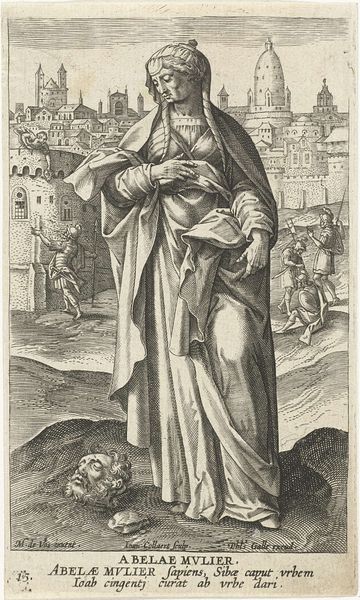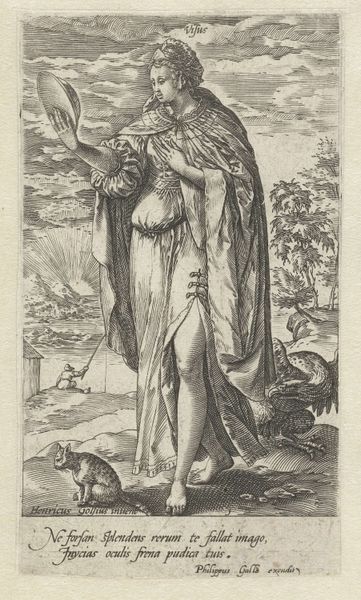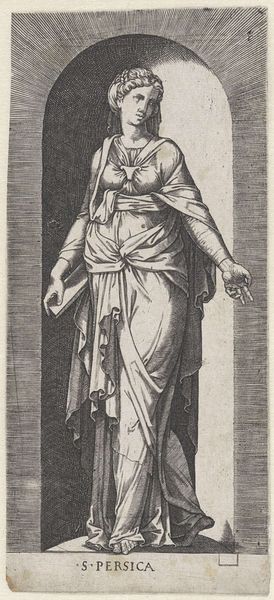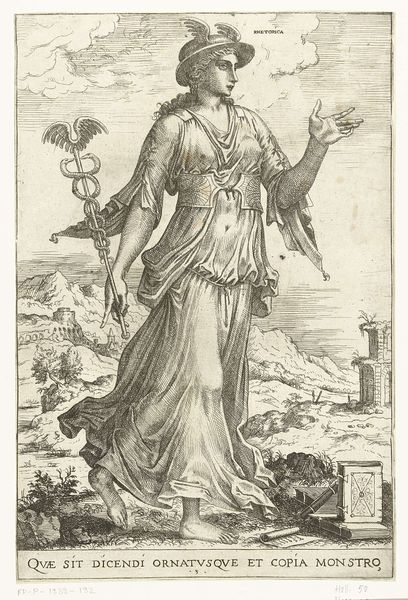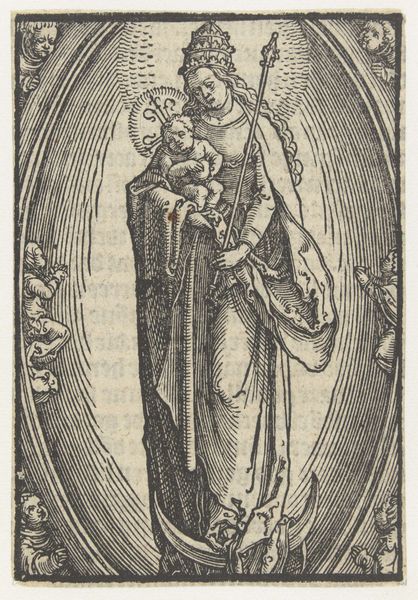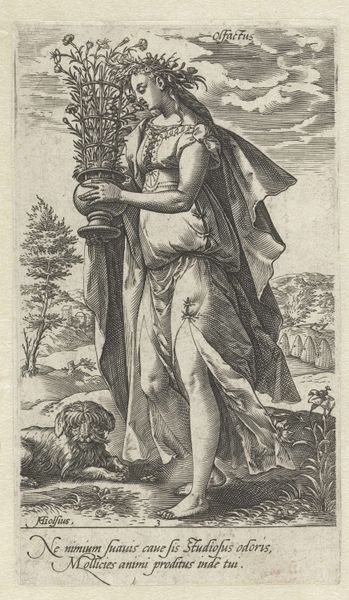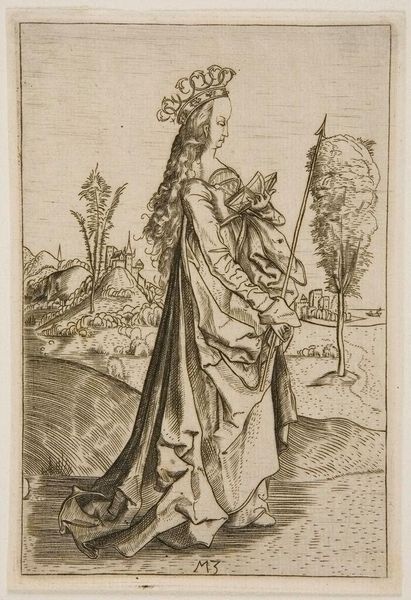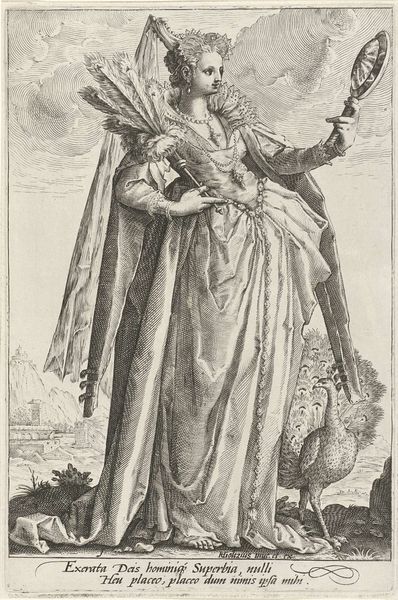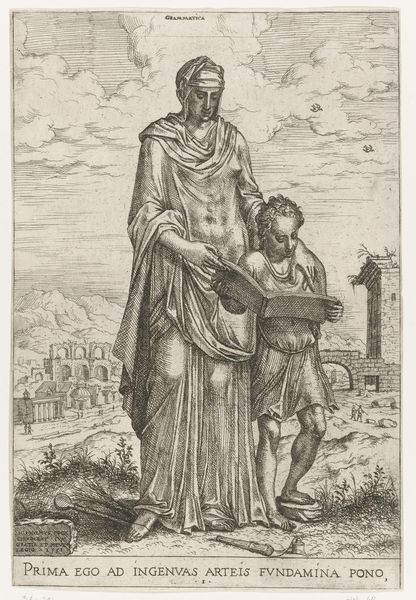
drawing, print, pen, engraving
#
drawing
#
allegory
# print
#
pen illustration
#
pen sketch
#
figuration
#
form
#
11_renaissance
#
line
#
pen
#
history-painting
#
northern-renaissance
#
engraving
Dimensions: height 300 mm, width 202 mm
Copyright: Rijks Museum: Open Domain
Editor: We're looking at Hieronymus Cock's "Industria," created in 1551. It's a detailed engraving, full of line work. I’m struck by how the central figure dominates the scene, but the supplicant at her feet really complicates the reading. What do you see in this piece? Curator: Focusing purely on the visual, we can consider how Cock deploys line to articulate form. Observe the varying densities of hatching; they define the drapery and musculature with considerable skill. The linear precision contributes to a sense of classical order, despite the potentially chaotic subject matter implied by "industry" itself. Note also the way the horizon line bisects the composition. Do you think that division is intentional? Editor: Possibly, setting up the ruins and open space as separate but equally crucial elements. They're more than mere backgrounds. The linear perspective leads my eye to them directly. Curator: Precisely. Consider, too, the use of contrasting textures, smooth skin juxtaposed with the rough-hewn landscapes, or architectural features. How do those oppositions affect your understanding? Editor: The stark contrast makes the textures much more defined, highlighting their qualities, especially because of how different they are, maybe emphasizing a clash between chaos and order? I didn't notice it right away. Curator: Indeed, the artist's hand deliberately guides us to discover nuances embedded within these deliberate formal arrangements. Notice how the lines curve and flow to add to this theme. Editor: I'm appreciating the balance between the detail and the overall composition more now. Paying closer attention to those relationships opened it up. Curator: And the artist succeeds in conveying layers of significance through skillfully manipulating the elements. Thank you.
Comments
No comments
Be the first to comment and join the conversation on the ultimate creative platform.

